
Video: Introduce a Girl to Engineering Day – Girl Day 2020
With more than 1,400 volunteers from UT Austin, nonprofit organizations, and AEC firms, Girl Day has become the largest event of its kind in the United States!
Learn from award-winning professionals — explore our whitepapers, blogs, and the latest industry updates.
Join our dynamic organization of engineers, land surveyors, landscape architects, environmental scientists, and architects!
Talk to a market leader today! We’ll answer any questions you have about our professional services.
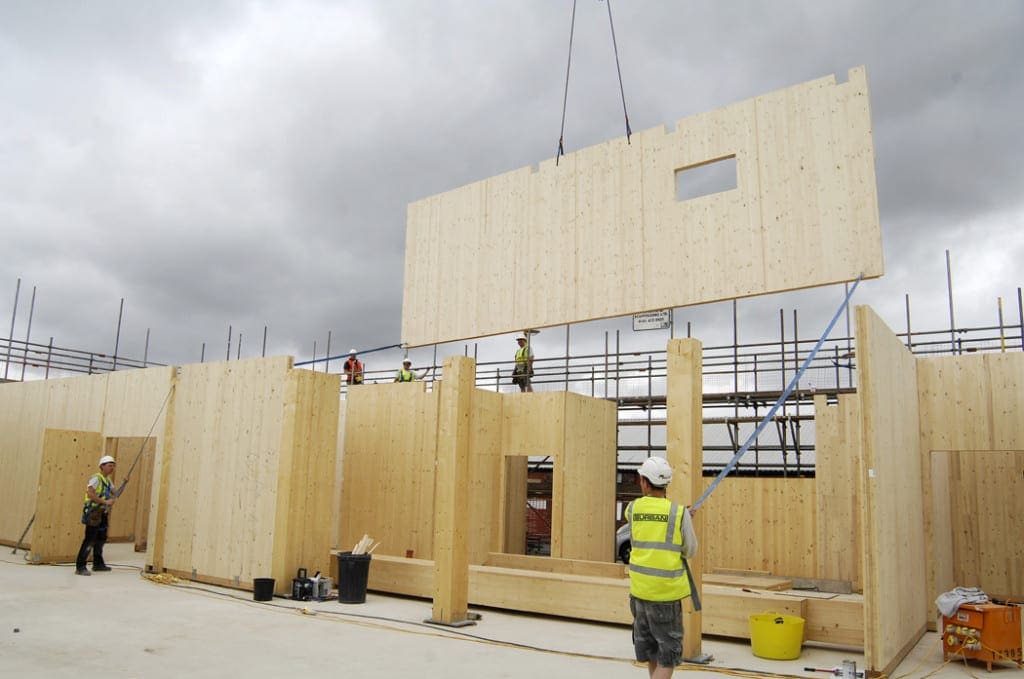
Already a popular building material in Europe and gaining traction in the US, Cross-Laminated Timber (CLT) is a building material made from many pieces of dimensional lumber glued and stacked in multiple crosswise layers. It is among a number of new “mass timber” products being manufactured from simple components of sustainable material, requiring far less energy to produce than its steel and concrete competitors, and made from an indefinitely renewable material (wood) from sustainably-managed forests. The 2015 International Building Code explicitly recognizes CLT as a structural system, making it easy for many cities to add CLT as an approved structural solution for architectural and engineering design.
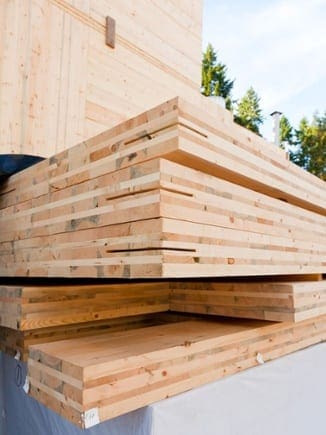
Below are 5 benefits of using CLT in construction:
CLT panels are prefabricated to precise dimensions and can even have finishes or insulation added before installation, which makes for a faster project completion and quicker occupancy. A crew of 5-6 can install 25-30 panels or 8,000+ square feet per day. CLT structures also weigh less than concrete or steel, thus reducing foundation costs, particularly on sites with poor soil. They can also be combined with other building materials such as steel or glue-laminated timber (glulam) beams to enable flexible design.

The faster construction process reduces the cost to the contractor, which lowers the cost for the end client. The reduction in the overall cost of a construction project is based on:
CLT is manufactured from sustainably managed forests and is the only building product that grows naturally and is renewable. Additionally, CLT panels are manufactured for specific end-use applications, which results in little to no job site waste. Plus, manufacturers can reuse fabrication scraps for stairs and other architectural elements, or as biofuel.
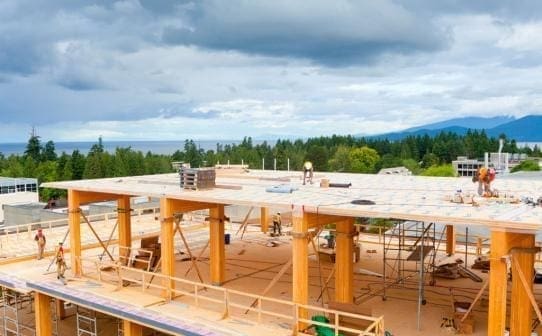
Due to the cross-lamination of the lumber layers, CLT panels are dimensionally stable and stiff and strong both in-plane and out-of-plane. CLT has structural capabilities similar to that of concrete, and can be used for similar applications, including bearing walls, shear walls, floors, roofs, or even deep beams. Perhaps counterintuitively, wood buildings also historically have long lifespans, being less likely to be demolished than steel or concrete buildings.
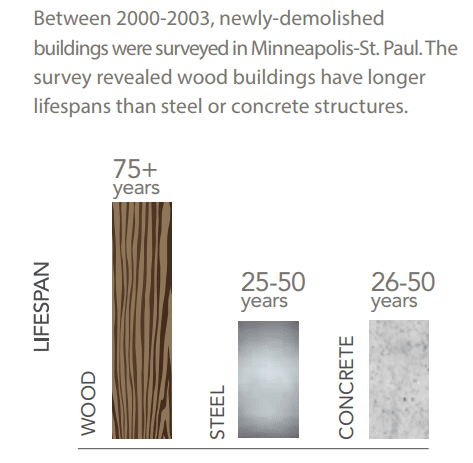
CLT, like other mass timber materials, is also robust and highly-predictable in fire – the outer layer of a cross-laminated timber panel will initially burn, but then builds up a layer of insulating char which can provide 30, 60 or even 120 minutes of fire resistance depending on the number and size of the panel’s layer build-up.
CLT’s thermal performance is bolstered by two things: panel thickness and tight joints. Thicker panels are better insulators and need less added insulation (or better performance with same amount of insulation). Also, CLT is manufactured using very precise CNC machines, and joints fit tightly together, allowing and less heat to escape or enter. Maintaining interior temperatures in a finished CLT structure requires as little as one-third of the heating/cooling energy needed for other traditional structure types.
Due to the thickness and density of wall or floor panels, CLT building systems can provide excellent noise control for both airborne and impact sound transmission when combined with proper isolation and insulation layers between CLT panels and finish materials. Sealants applied at tight-fitting CLT panel joints reduce flanking noise transmission and further improve acoustic performance. Field-tested acoustic ratings (FSTC and FIIC) of 60-70 have been documented for some CLT assemblies, substantially outperforming building code requirements and providing a more comfortable experience for building occupants.
Article Resources:

WGI is a national design and professional services firm leading in technology-based solutions for the construction of public infrastructure and real estate development. At WGI, we’re providing Tomorrow’s Infrastructure Solutions Today.

With more than 1,400 volunteers from UT Austin, nonprofit organizations, and AEC firms, Girl Day has become the largest event of its kind in the United States!

Join WGI’s Arnaud Thibonnier, P.E., S.E., Director, Structural Engineering, for an in-depth introduction to the unique considerations of “high-rise” structural design.
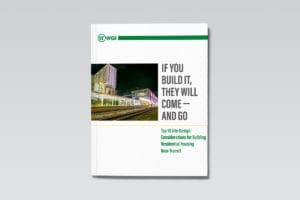
Don’t let your next TOD project flop. WGI has the top 10 site-design considerations for building residential housing near transit and the expert team to ensure your TOD project is a success!

Of all the contingencies facility owners and managers planned for in 2020, a global pandemic was probably pretty low on the list. WGI has some key strategies that facility owners and managers leverage to keep your operations functioning effectively and safely amid this global pandemic.
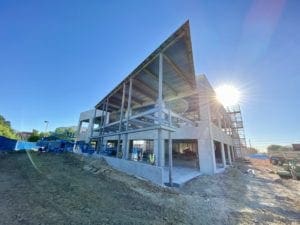
WGI is providing Civil and Structural Engineering services for a new 32,000-sf business complex that will include a covered roof terrace, covered parking, and a 10,000-square-foot warehouse.

Join WGI’s Director of Structural Engineering, Arnaud Thibonnier, PE, SE, for an in-depth introduction to the unique considerations of “high-rise” structural design.
You’ve been searching for a place like WGI. We look forward to meeting you soon.
Sign up to receive emails to hear our latest news and achievements in our monthly newsletter.
Enter your zip code, and we’ll personalize your experience with local projects, office locations, team members, and more.
WGI supports its associates with meaningful opportunities for growth, strong benefits and perks, while we work collaboratively with clients and co-consultants to shape and improve communities.






WGI is a dynamic organization with opportunities nationwide for engineers, land surveyors, landscape architects, environmental scientists, and architects.